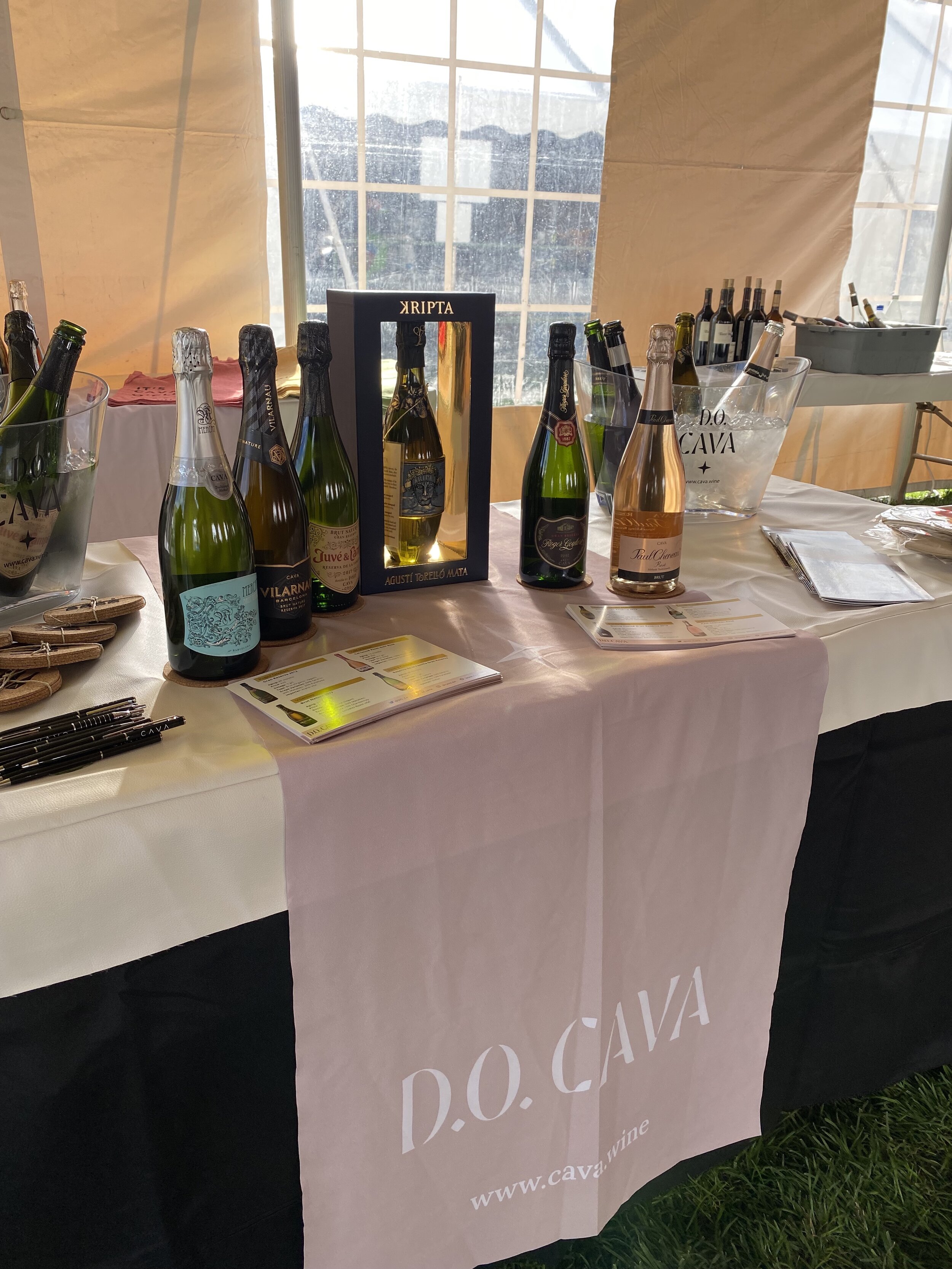Should We Be Drinking More Cava?
Last week I got on a plane for the first time in more than a year. Despite the fact I flew with United Airlines (just choose another airline, Matthew), it was a comfortable enough experience and I now feel mentally prepared for a flight back to Europe.
The reason for my flight was to attend Food & Drink Classic in Aspen, Colorado. And the specific reason was to help my wife, Katie, pour Cava at the event. I probably wasn’t that much help—although I did get to wear a fetching apron—but the event made me readjust some of my opinions on Cava.
As noted on a previous post and on my podcast, I am sometimes sceptical of the overall standard of Cava but also quietly excited by the improvements being made in the quality and consistency of the wines. At the same time, even as Cava gets better, I’ve wondered who exactly drinks Cava. The event taught me that actually a lot of people do, and they love Cava.
We were pouring six different bottles of Cava to a mixed audience, some of whom proclaimed a deep attachment to Cava and others who had never heard of it. Either way, the wines were very well received with the table being one of the most popular at the event. It proved that good wines at a $15-25 price point are exactly what many consumers are looking for.
And, just like any other region, it’s worth seeking out the smaller producers as that’s where quality lies—imagine the difference between buying a Burgundy in a supermarket and an independent wine shop, except the price difference is far less extreme. And, just like in Champagne, many of these producers have been farming their properties for generations. That local know-how and pride is the key behind the rise of quality Cava.
some producers
Juvé y Camps
Back when I worked at a wine shop in Manchester, the go-to magnum of sparkling wine for many of our customers was made by Juvé y Camps. There’s little better than a magnum of bubbles, even more so when it costs less than $40/£30 and is still excellent. Juvé y Camps have been making wine since 1796, and sparkling wine since 1921 so there’s plenty of provenance to the producer. They pioneered the Gran Reserva style of Cava, which is aged for the same length of time as a vintage champagne. Their style is rich, weighty, and distinctive, and the vintage Milesimé is a steal at $24.
Parés Baltà
Parés Baltà make a range of wines as well as some exceptional Cava. Winemaking begain in 1790 and the winery is still family owned and run. The best Cava comes from just inland from Barcelona at 250m+ elevation, providing cooler growing conditions—the Pares Balta winery is just 30km from the Mediterranean but the hills rise quickly. Pares Balta farm organically and biodynamically, and the Blanca Cusiné may be my favourite Cava. Aged for 80 months, it’s a blend of 81% Xarel·lo, with Chardonnay and PInot Noir, marrying tradition with a willingness to try something different. In the US it retails for $45, which is expensive for Cava but absolutely worth it in comparison to other sparkling wines at the same price. (On the winery website, it’s listed at €18, which is worth a trip to Barcelona alone.)
Agustí Torelló Mata
The wine which immediately caught everyone’s eye at the festival was Kripta, which is made by Agustí Torelló Mata. This is because it has one of the most distinctive packaging of any wine. It is sold in a grandiose box, and the bottle cannot stand up because it’s amphora shaped. Such packaging immediately prompts excited questions, which is exactly what Cava in general needs. First made in 1978, it’s aged for 8 years on the lees, making it a serious, powerful wine. Besides the packaging, I’m not sure it justifies the $90 price tag, but it is a wine that should be tried at least once.
These three producers show the diversity of Cava, in style as well as price point, and that Cava isn’t just high-volume supermarket wine. With these smaller producers, there’s an adherence to history and tradition but also an awareness that the region must be modern and contemporary to remain competitive in a crowded market. And these producers place an emphasis on quality over volume, which can only elevate the reputation of Cava.
For a list of Cava wineries, visit the DO Cava website.




